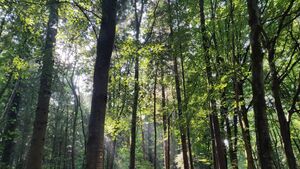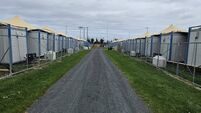Improvement works set for Monasterevin forest

Moore Abbey Wood
Coillte has announced upcoming forestry works to improve the long-term biodiversity value of Moore Abbey Wood in Co Kildare. In order to restore and enhance the area and its wildlife, Coillte ecologists have put a management plan in place to improve the long-term biodiversity of this forest.
Moore Abbey Wood is a beautiful and popular recreation forest near Monasterevin. Managed by Coillte primarily for nature and wildlife, the wood has been recognised as an important forest for biodiversity preservation; particularly well known locally for its fantastic display of bluebells in springtime. The overall vision for Moore Abbey Wood is to create a permanent and biodiverse forest, teeming with wildlife, and a wonderful place for visitors to enjoy.
The works which will begin this month and last for approximately five weeks will see Coillte adopt a close-to-nature approach to manage Moore Abbey Wood. Guided by a plan developed collaboratively by both ecologists and foresters, the forest will gradually be transformed from even-aged stands dominated by one or two tree species into a diverse ecosystem with trees of varying ages and sizes, and a rich assortment of species in both the tree canopy and forest floor.
This diversification will create new habitats, allowing a wide variety of wild animals and plants to flourish.
This approach is known as Continuous Cover Forestry and will ensure a permanent forest cover is retained at Moore Abbey Wood for decades to come. The forest will be thinned periodically with individual trees removed to create gaps in the forest canopy and allow the light needed that will promote natural regeneration of a range of tree species.
The forest in Moore Abbey Wood is a mix of different tree species such as beech, Norway spruce, Douglas fir, Lawson cypress and native tree species like oak, ash and holly. Although it currently holds significant value for wildlife, much of the forest is now even aged with a dense forest canopy limiting the amount of light reaching the forest floor. This hinders the natural regeneration of new trees needed to sustain the forest’s future.
“Coillte’s Moore Abbey Wood is an important forest for nature and a popular recreation forest locally. Coillte’s approach at Moore Abbey has been drawn up by ecologists and foresters working together to enhance the long-term biodiversity value of this woodland,” said Coillte Forest Ecologist, Rob Dunniece.
“The management plan for Moore Abbey will see individual trees removed and will be implemented in a sensitive manner. These works will ensure that the ecology of the woods will be enhanced, promoting natural regeneration in the woodland and creating new habitats for wildlife.”
Coillte also manages the wood for recreation with a number of marked walking trails including the Count John McCormack Way (3.5km). Named after the famous Irish tenor, the trail gives visitors views of Moore Abbey House where the Count once lived.
Warning signage will be erected in Moore Abbey Wood ahead of works this September, and temporary diversions may be in place during forest operations. Coillte asks visitors to please adhere to all safety signage on site and thanks visitors for their cooperation.





